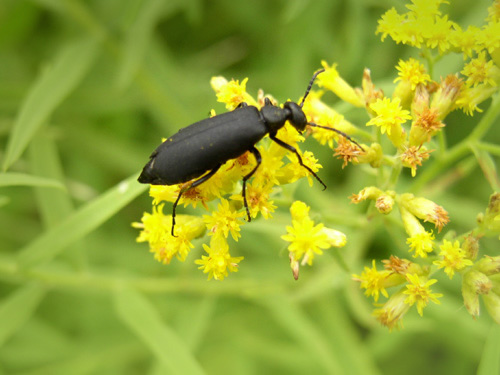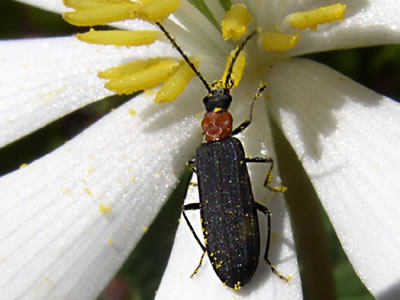Beetle Pollination
Beetles were among the first insects to visit flowers and they remain essential pollinators today. They are especially important pollinators for ancient species such as magnolias and spicebush. Beetles will eat their way through petals and other floral parts. They even defecate within flowers, earning them the nickname “mess and soil” pollinators. Research has shown that beetles are capable of color-vision.
Beetle Flowers
The flowers that are visited by beetles are typically:
- Bowl-shaped with sexual organs exposed
- White, to dull white or green
- Strongly fruity
- Open during the day
- Moderate nectar producers
- May be large solitary flowers (i.e. magnolias, pond lilies)
- May be clusters of small flowers (goldenrods, Spirea)
 Female valley elderberry longhorn beetle. Photo by Charles Webber © California Academy of Sciences.
Female valley elderberry longhorn beetle. Photo by Charles Webber © California Academy of Sciences.
Fossil records show that beetles were abundant during the Mesozoic (about 200 million years before present). Beetles were flower visitors of the earliest angiosperms. Many present-day beetle pollination associations like that of Magnolia, a primitive woody angiosperm, have ancient evolutionary origins.
 Magnolia. Photo by Steve Baskauf.
Magnolia. Photo by Steve Baskauf.




